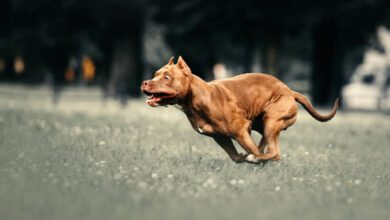A Deep Dive into Pug Skull Anatomy at 2024

The pug skull is truly distinctive, with its flat face, short snout, and prominent eyes making it stand out among dog breeds. Understanding these unique features is important for ensuring your pug’s health and proper care.
By learning about the specific anatomy of the pug skull, you can better appreciate how it affects their overall well-being. This article will compare the pug skull with those of other breeds, highlighting what makes it special and why these differences matter. Let’s join us as we are going to explore everything about pug skull.
Structural Features of the Pug Skull
The structure of the pug skull is a defining feature of the breed, contributing to its distinctive appearance and influencing various health aspects. The pug’s brachycephalic shape, along with its specific skull dimensions and facial characteristics, plays a crucial role in defining its overall anatomy.
Brachycephalic Shape
- Flat and Short Snout: The pug’s skull is notably brachycephalic, meaning it has a broad, flat face with a short snout. This structure results in a compressed facial profile, where the nasal bridge is much shorter compared to non-brachycephalic breeds.
- Impact on Appearance: This flattened face gives pugs their signature look, but it also affects their airway structure, leading to the potential for breathing issues.
Skull Dimensions
- Key Measurements: Pug skulls are characterized by their short, broad dimensions. The width of the skull is relatively large compared to its length, which is a hallmark of brachycephalic breeds.
- Proportions: The proportion between the skull’s width and length is distinct, contributing to the pug’s compact and rounded head. This unique proportion affects not only their appearance but also their health and function.
Facial Characteristics
- Prominent Eyes: Pugs have large, protruding eyes set in a forward position due to the broad structure of their skull. This prominent eye placement enhances their expressive look but also makes them more susceptible to eye injuries and conditions.
- Short Nasal Passages: The nasal passages in pugs are shorter and more constricted, which can impact their ability to breathe efficiently. This feature often contributes to respiratory conditions like Brachycephalic Obstructive Airway Syndrome (BOAS).
Implications of Structural Features:
- Health Considerations: The brachycephalic structure, combined with the short snout and prominent eyes, influences various health aspects, including breathing difficulties, eye health, and overall comfort.
- Care Needs: Understanding these structural features helps in managing the pug’s health proactively. Regular veterinary check-ups, appropriate environmental conditions, and awareness of potential health issues are essential for maintaining the pug’s well-being.
The distinctive structural features of the pug skull not only define the breed’s appearance but also play a critical role in its health. Recognizing these features and their implications can help in providing better care and improving the quality of life for pugs.
Bone Structure and Composition
The bone structure of the pug skull is intricate and crucial to both its unique appearance and functional aspects. Understanding the composition of cranial and facial bones, along with the joints and sutures, provides insight into the overall anatomy of this breed.
Cranial Bones
- Frontal Bone: Located at the front of the skull, the frontal bone forms the forehead and part of the eye sockets. In pugs, this bone contributes to the broad, flat appearance of the face.
- Parietal Bones: These bones are situated on the top and sides of the skull, forming the roof of the cranial cavity. The parietal bones in pugs help define the shape and width of the skull.
- Occipital Bone: Positioned at the back of the skull, the occipital bone forms the base and contributes to the protection of the brainstem. It also plays a role in the articulation of the skull with the spine.
Facial Bones
- Maxilla: The maxilla is the upper jawbone, which supports the upper teeth and forms part of the nasal cavity. In pugs, the maxilla is relatively short and broad, contributing to the breed’s characteristic facial structure.
- Mandible: The mandible, or lower jawbone, supports the lower teeth and provides the foundation for chewing. The alignment and shape of the mandible in pugs affect their bite and overall dental arrangement.
Joints and Sutures
- Sutures: The sutures are fibrous joints that connect the bones of the skull. In pugs, these sutures are crucial for providing flexibility and stability to the skull structure. They allow for slight movement during growth and help maintain the integrity of the skull.
- Joints: The joints, such as the temporomandibular joint (TMJ), connect the mandible to the rest of the skull. This joint is essential for mouth movement, including chewing and opening the mouth.
Implications of Bone Structure:
- Skull Stability: The arrangement of cranial and facial bones, along with sutures and joints, provides stability to the skull while allowing for necessary movements.
- Functional Impact: The structure affects various functions, including chewing, breathing, and facial expressions. In pugs, the unique bone structure contributes to their distinct appearance but can also influence health aspects like dental alignment and respiratory function.
Understanding the bone structure and composition of the pug skull is essential for appreciating how it supports both the breed’s characteristic look and its functional needs. Proper care and monitoring of these structural features can help maintain overall health and prevent potential issues.
Airway and Breathing Anatomy
The structure of the pug skull significantly affects its airway and breathing mechanics. The unique features of the pug’s skull, including its flat face and short snout, influence the anatomy of the nasal passages, pharynx, and larynx, leading to specific respiratory challenges.
Nasal Passages
- Structure: The nasal passages in pugs are notably short and compact due to their brachycephalic skull shape. This results in narrower airways compared to breeds with longer snouts.
- Limitations: The reduced length and size of the nasal cavities can limit airflow, making it more difficult for pugs to breathe efficiently. This constriction can also contribute to increased resistance and potential breathing difficulties.
Pharynx and Larynx
- Pharynx: The pharynx, or throat, serves as a passageway for air from the nasal cavity to the larynx and lungs. In pugs, the pharynx may be compressed due to the skull’s structure, affecting its ability to accommodate the airflow.
- Larynx: The larynx, or voice box, is responsible for sound production and protecting the airway during swallowing. The pug’s larynx can be affected by the brachycephalic shape, leading to potential issues such as laryngeal collapse, which further impairs breathing.
Breathing Challenges
- Impact of Skull Anatomy: The flat, broad skull and shortened snout create a constricted airway, leading to challenges in airflow. Pugs are prone to conditions like Brachycephalic Obstructive Airway Syndrome (BOAS), where the restricted nasal passages and altered pharyngeal structure can cause breathing difficulties.
- Respiratory Function: The compromised airflow can lead to symptoms such as snoring, panting, and labored breathing, especially in hot or humid conditions. These issues are exacerbated during physical exertion or when the pug is under stress.
Implications for Health:
- Monitoring: Regular monitoring of breathing patterns and respiratory health is crucial for pugs. Owners should be aware of signs of breathing distress and seek veterinary care if needed.
- Management: Managing the environment to avoid excessive heat and stress can help mitigate breathing issues. Additionally, ensuring that the pug maintains a healthy weight and avoiding strenuous activities can support respiratory function.
Understanding the airway and breathing anatomy of the pug skull is essential for managing and preventing respiratory issues, ensuring the overall well-being of this unique breed.
Dental and Oral Structures
The structure of the pug skull profoundly influences its dental and oral health. The pug’s distinctive brachycephalic shape affects the arrangement of teeth, jaw function, and common dental issues.
Teeth Arrangement
- Influence of Skull Shape: The flat, broad skull and shortened snout in pugs lead to a compact dental arch. This can result in crowded teeth and limited space for proper alignment.
- Tooth Spacing: Due to the reduced size of the dental arch, pugs often experience overcrowding, where teeth may overlap or become misaligned. This can impact their ability to maintain proper oral hygiene and function.
Jaw Function
- Bite Mechanics: The pug’s bite can be affected by the compact arrangement of the teeth and the structure of the jaw. Common bite issues include underbites or overbites, where the alignment of the upper and lower jaws does not meet correctly.
- Chewing Ability: The restricted space for the teeth and misalignment can influence how effectively pugs chew their food. They may have difficulty with certain types of food, leading to potential issues with digestion and overall dental health.
Common Issues
- Dental Problems: Pugs are prone to dental problems such as overcrowding, which can lead to misalignment and increased risk of periodontal disease. The limited space also makes it challenging for owners to clean the teeth effectively.
- Gum Disease: Crowded teeth can contribute to the buildup of plaque and tartar, increasing the risk of gum disease. Regular dental care is essential to prevent complications related to oral health.
Implications for Care:
- Routine Dental Care: Regular brushing, dental check-ups, and professional cleanings are vital for maintaining dental health in pugs. Owners should be diligent in monitoring their pet’s oral hygiene to prevent dental issues.
- Diet and Chewing: Providing appropriate food and chew toys that support dental health can help manage some of the issues related to the pug’s skull structure. Ensuring that the food is suitable for their dental needs can aid in effective chewing and digestion.
Understanding the impact of the pug skull on dental and oral structures is crucial for maintaining their overall health and comfort. Proper care and regular veterinary visits can help address and prevent common dental issues associated with their unique skull features.
Eye Position and Protection
The unique structure of the pug skull significantly impacts the positioning and protection of their eyes. Understanding these aspects is essential for maintaining their eye health and addressing potential issues related to their distinct anatomical features.
Eye Socket Structure
- Eye Positioning: The pug’s brachycephalic skull design leads to prominent and forward-set eyes. This anatomical trait results from the flattened facial structure and reduced space within the eye sockets, which alters the usual positioning of the eyes.
- Shallow Sockets: The eye sockets in pugs are relatively shallow compared to other breeds. This can cause the eyes to protrude more prominently, making them more visible and susceptible to external factors.
Vulnerability to Injury
- Risk of Protrusion: The prominent positioning of the eyes increases their vulnerability to injuries. Pugs are at a higher risk for scratches, abrasions, and trauma, especially from rough play or accidental bumps.
- Exposure Issues: Protruding eyes can also lead to exposure-related problems. The eyes may dry out more quickly and become prone to conditions such as corneal ulcers or conjunctivitis due to inadequate protection from the surrounding eyelids.
Care Tips
- Regular Checks: Frequent examination of the eyes is crucial. Look for signs of redness, swelling, or discharge, and consult a veterinarian if any abnormalities are observed. Regular check-ups can help identify potential issues early.
- Protection Measures: Use protective eyewear or prevent your pug from engaging in activities that could lead to eye injuries. Ensure their environment is safe and free from hazards that could pose a risk to their eyes.
- Hydration and Cleaning: Keep the eyes moisturized with vet-recommended eye drops if dryness is a concern. Clean the area around the eyes gently to remove debris and prevent infections.
Understanding the impact of the pug’s skull structure on eye positioning and protection helps in taking proactive measures to safeguard their eye health. Regular care and vigilance can mitigate risks and ensure the well-being of your pug’s eyes.



